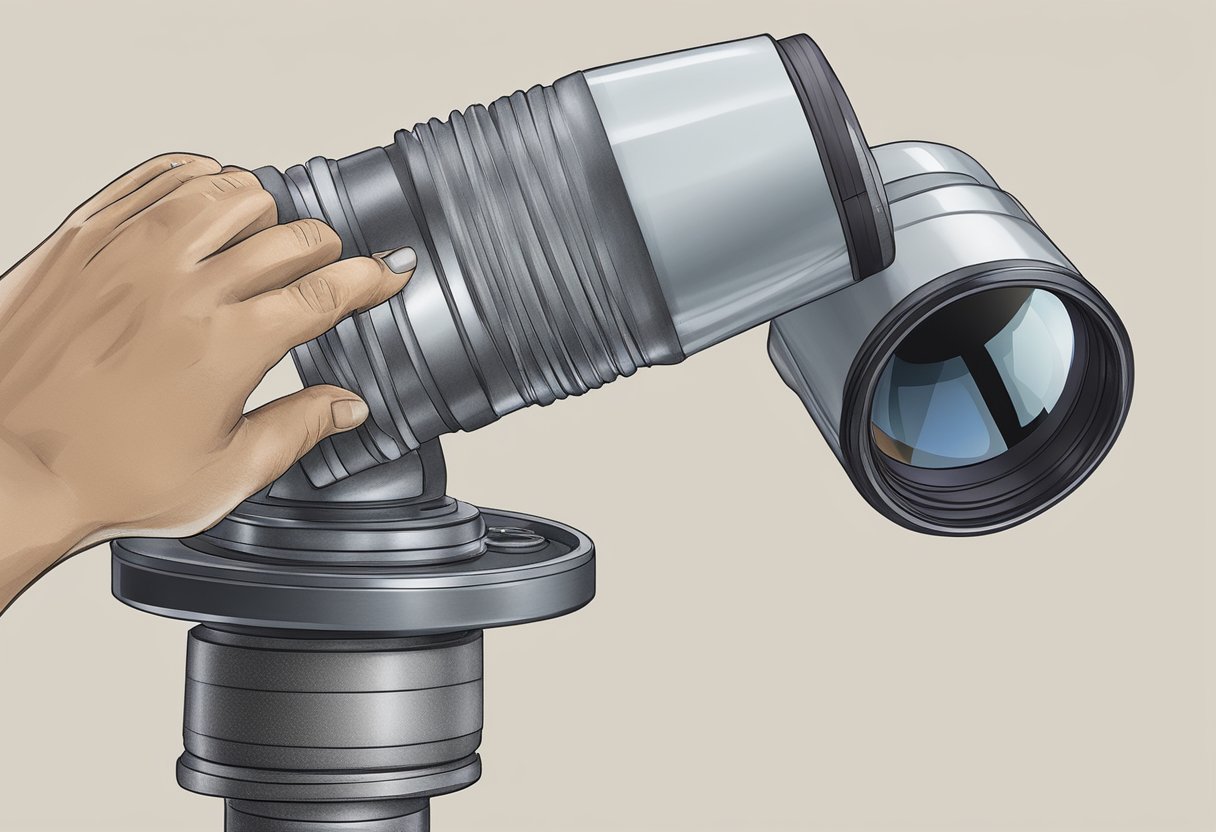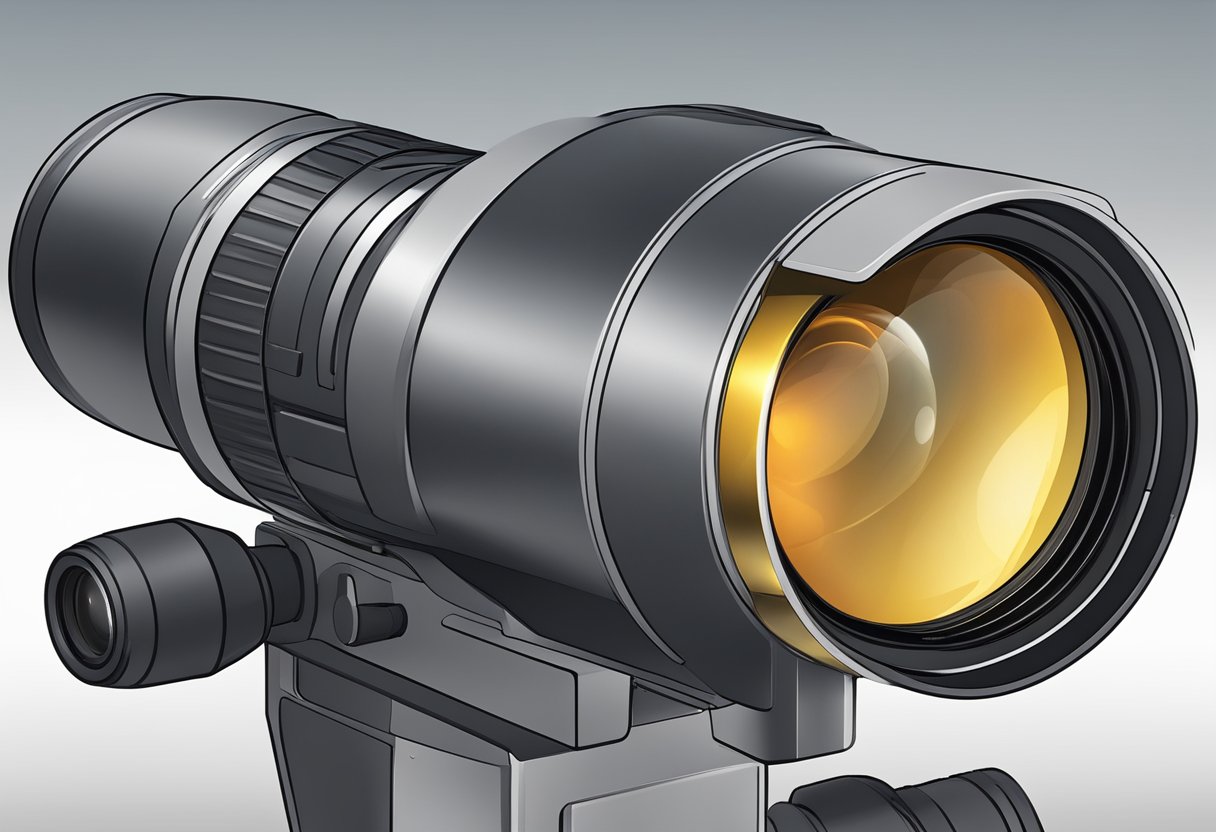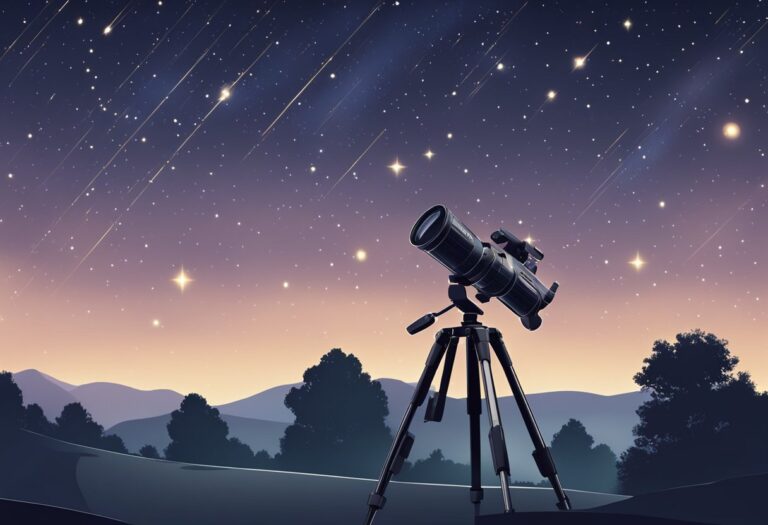A 3x Barlow lens is an essential telescope accessory for amateur and seasoned astronomers looking to enhance the magnification of their telescopes.
By tripling the effective focal length of the telescope, a Barlow lens can provide more detailed views of celestial objects without the need to purchase additional, more powerful eyepieces. Thanks to its design that elongates the light path, understanding how to use a Barlow lens correctly can significantly improve your stargazing experience.
Using a Barlow lens involves more than just inserting it into the eyepiece slot. Properly attaching your Barlow lens and adjusting the focus of your telescope are crucial steps. It is vital to select the appropriate Barlow lens for your specific type of telescope as well as the celestial targets you wish to observe.
Success with a Barlow lens also depends on your familiarity with the focusing process, which may vary significantly from the focus adjustments when viewing directly through an eyepiece.
To use a 3x Barlow lens, attach it between your telescope’s focuser and the eyepiece. This triples the eyepiece’s magnification, allowing for detailed celestial views. Ensure the lens is compatible with your telescope type and targets. Correct attachment and focusing are key for optimal performance.
Understanding the 3x Barlow Lens
A 3x Barlow lens triples the magnifying power of your telescope eyepiece. It’s a cost-effective way to enhance your viewing capabilities without needing to purchase additional eyepieces.
Benefits of a 3x Barlow Lens:
- Increases magnification effectively
- Maintains eye relief of longer focal length eyepieces
- Requires only one device to augment magnification
When you insert a 3x Barlow lens into the telescope’s focuser, followed by your eyepiece, the resulting magnification is effectively tripled. For instance, an eyepiece that offers 50x magnification alone will provide 150x when used with the Barlow lens.
Usage Tips:
- Insert the Barlow lens into the telescope’s focuser.
- Secure it in place using the set screw or clamping mechanism.
- Attach your eyepiece to the end of the Barlow lens.
- Adjust the focus of your telescope as you normally would.
Consider the conditions when using a Barlow lens—as magnification increases, so does the impact of atmospheric disturbances, often resulting in a less stable image.
The quality of a Barlow lens varies by manufacturer. High-quality options typically feature multi-coated optics that reduce reflections and ensure clearer images.
Remember, using a 3x Barlow lens may require additional focus travel, which not all telescopes can accommodate. Be sure to check your equipment’s specifications to confirm compatibility.
Choosing the Right Barlow Lens
When selecting a 3x Barlow lens, the two critical aspects you need to consider are its compatibility with your telescope and the quality of the lens itself.
Compatibility with Telescopes
The Barlow lens must match the eyepiece size of your telescope for it to fit properly. Most telescopes have either a 1.25-inch or 2-inch eyepiece diameter. A 3x Barlow lens amplifies the telescope’s magnification by three times, so it’s essential to ensure your telescope can handle the increased magnification without degrading image quality.
Lens Quality and Build
The construction of a Barlow lens affects the image clarity and color accuracy. Look for Barlow lenses with multi-element designs, which typically offer better image quality than single lens elements.
Achromatic or apochromatic Barlow lenses minimize chromatic aberration, resulting in clearer, sharper images. Additionally, the build material and durability are important if you want your lens to last, especially if you frequently observe in varying outdoor conditions.
Attaching the Barlow Lens

Proper attachment of a 3x Barlow lens to your telescope is crucial for enhancing the magnification of celestial objects. This guide ensures a secure and optimal setup for stargazing sessions.
Preparing Your Equipment
Before attaching the Barlow lens, ensure that your telescope and the lens are both clean and free from dust. Use a proper optical-cleaning solution and a microfiber cloth to gently wipe the surface of the lens. Verify that your telescope’s focuser is compatible with the size of your Barlow lens; most Barlows fit into a standard 1.25-inch or 2-inch focuser.
Secure Mounting Techniques
Step 1: Unscrew the protective caps from the Barlow lens and the telescope’s eyepiece holder.
Step 2: Insert the Barlow lens directly into the telescope’s focuser.
- For 1.25-inch focusers: Ensure the Barlow’s barrel slides in smoothly without resistance.
- For 2-inch focusers: If the Barlow is 1.25-inch, use an adapter to properly secure it in place.
Step 3: Tighten the focuser’s set screw firmly to hold the Barlow lens in place. Be cautious not to over-tighten, as it could damage the lens barrel or the focuser’s threading.
Step 4: Attach an eyepiece into the end of the Barlow lens.
- Alignment: Confirm that the eyepiece is seated squarely to avoid any misalignment that could result in a distorted image.
Step 5: Once again, secure the eyepiece with the appropriate set screw. It’s essential to achieve a snug fit to prevent the eyepiece from becoming loose during observation.
Focusing with a Barlow Lens
Integrating a Barlow lens into your observing setup essentially doubles or triples the effective focal length of your telescope, leading to higher magnification. However, it also changes the focus point, which requires careful adjustment.
Adjusting the Focus
When you insert a 3x Barlow lens between your telescope and eyepiece, the original focus point is extended outwards. Start by gently sliding the eyepiece further out of the Barlow until you find the new focus point. Fine-tune using the telescope’s focusing knob until the image is sharp. Remember that the focus point with a Barlow lens will be farther out than without one.
Dealing with Focus Shift
Be aware that adding a Barlow lens can introduce a focus shift, which might require refocusing when changing eyepieces. To combat this, always recheck the focus after any adjustment to your setup. If your telescope has a limited focus range, you may need a Barlow with a built-in sliding mechanism or an additional extension tube to achieve focus.
Tips for Getting the Best Performance
To achieve the best performance with your 3x Barlow lens, precise handling and regular maintenance are crucial. Be methodical in addressing common issues to ensure optimal functioning.
Handling and Maintenance
- Proper Cleaning: Always use a lens brush or air blower to remove dust particles before wiping the glass with a microfiber cloth and optical cleaner.
- Storage: Store the Barlow lens in a padded case at room temperature to protect it from moisture and dust.
Troubleshooting Common Issues
- Image Deterioration: If you notice a drop in image quality, ensure that the lens surfaces are clean and free from fingerprints or smudges.
- Difficult Focus: When having trouble focusing, check for proper alignment with the eyepiece and ensure that the Barlow lens is securely seated in the telescope’s eyepiece holder.
Frequently Asked Questions
Before diving into the specifics, it’s essential to understand that using a 3x Barlow lens with your telescope will triple the magnification of your eyepieces, providing a closer view of celestial objects. Make sure that your telescope’s mount is stable and that the added weight of the Barlow doesn’t surpass its carrying capacity.
What steps should I follow to attach a 3x Barlow lens to my telescope?
To attach a 3x Barlow lens to your telescope, first make sure your telescope is securely mounted and then insert the Barlow lens into the focuser before placing the eyepiece into the Barlow lens. Ensure all connections are secure for the best viewing experience.
How do I use a 3x Barlow lens for astrophotography to get the best results?
For astrophotography, connect the Barlow lens directly to the camera adapter and ensure that the camera is securely attached. Achieve focus with the camera’s live view function for precision and consider using a remote shutter to minimize vibrations for clearer images.
What are the implications of using a 3x Barlow lens on eyepiece magnification?
By using a 3x Barlow lens, you effectively triple the magnification of any eyepiece you use. This can provide more detailed views of planets and lunar craters, but it will also narrow the field of view and may require a steadier mount due to increased sensitivity to movement.
Can a 3x Barlow lens be used in conjunction with a diagonal, and if so, in what order?
Yes, a 3x Barlow lens can be used with a diagonal. First, insert the diagonal into your telescope’s focuser, then attach the Barlow lens to the diagonal, and finally, connect your eyepiece. This setup is commonly used for comfortable viewing angles, especially in refractor telescopes.
Is there an increase in eye relief when using a Barlow lens, and how does this affect my viewing experience?
A Barlow lens does not increase the eye relief of your eyepiece. Eye relief remains the same as stated for the eyepiece alone. This means that, while you get more magnification, you should still choose eyepieces with comfortable eye relief to ensure a pleasant viewing experience.
What troubleshooting steps can I take if my 3x Barlow lens is not functioning properly with my telescope?
If you encounter issues with your 3x Barlow lens, first, ensure that it is clean and free of dust or smudges. Check that the eyepiece and Barlow contacts are secure. If you experience blurry images, readjust the focus with the Barlow lens in place. If the problem persists, consult the manufacturer’s guidelines or contact support.







